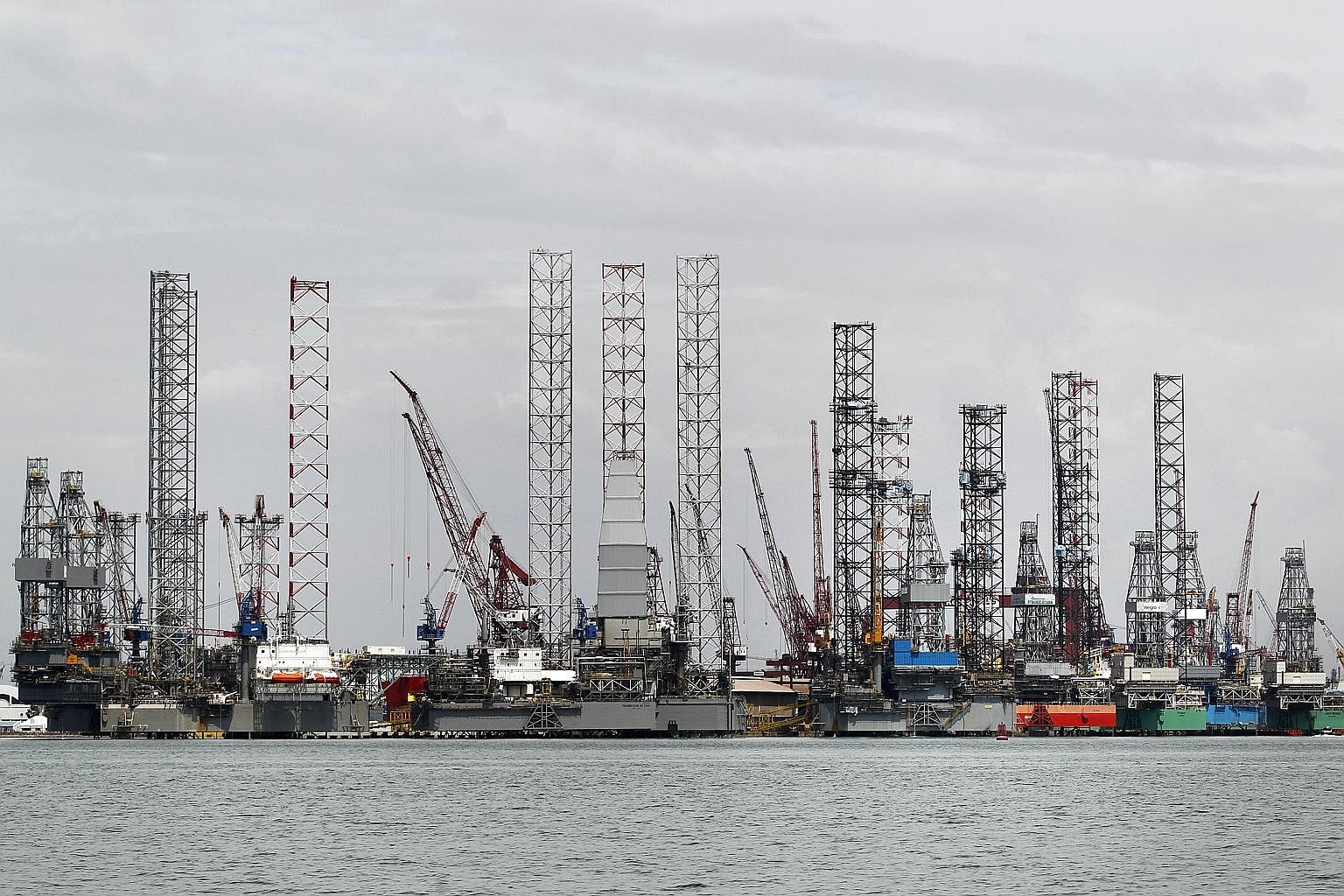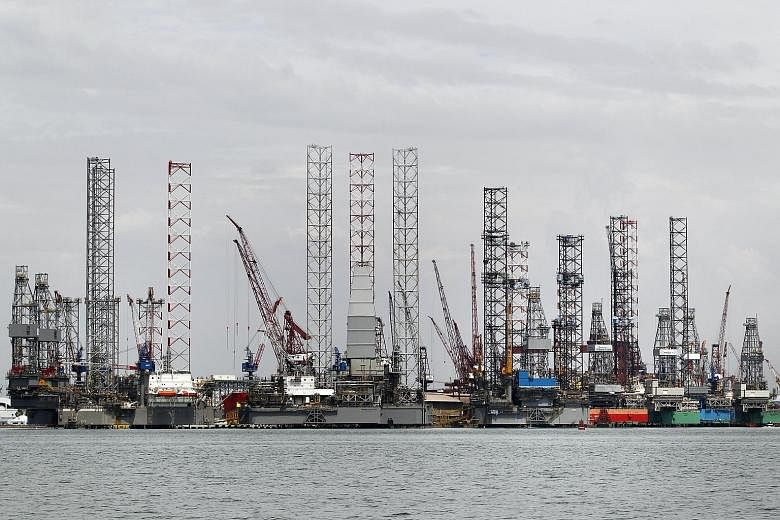One of the quirks of Singapore's modern economy belongs to a heavy industry dating back to the early 1970s - offshore rig construction. Burnished with images of steel, cranes and scaffoldings - incongruous with a sleek, city image - it has put this tiny island on a global map. In 2012, at its peak, it generated $15 billion in sales.
It has served its shareholders well. Its top executives are better paid than heads of government of First World countries, but the beneficiaries of the 100,000 jobs it provides are 75 per cent non-nationals.
Our founding fathers, the late Lee Kuan Yew, Goh Keng Swee and Hon Sui Sen, worked assiduously with organisations such as Japan's IHI Corp and Mitsubishi Heavy, and Swan Hunter of Britain, to nurture shipbuilding and repairto solve rampant unemployment when the British quit Singapore.
The pundits must have smirked: Shipbuilding - a preserve of advanced nations like Britain, Germany and the United States? Where are your markets, steel mills, engineers and artisans? But through unwavering commitment, a small team of dedicated pioneers - their skills honed in Britain, Japan and Germany - made the vision of Mr Lee, Dr Goh and Mr Hon a reality.
However, today a cloud of uncertainty looms. Oil prices have halved. For an industry whose fortune depends on the high price of oil to drive offshore oil exploration and production, the prospect of prices remaining low for two or even three years is chilling.

Casualties are evident. One-third of the more than 1,000 Chinese shipyards may have succumbed to the industry woes. The largest, Rongsheng Heavy Industries, after retrenching tens of thousands of workers, has yet to stabilise its financial affairs. Denial of a restructuring plan extension by the People's Court in Nantong, China, has caused yet another mega-yard, Mingde Heavy, to bite the dust. It was declared bankrupt in August. South Korean shipbuilding giants Daewoo and Hyundai have racked up heavy losses.
The dearth of new orders will last for the foreseeable future, amid a worldwide overcapacity in both shipyards and shipping.
In Singapore, unlike South Korea, Japan and China, there is no domestic market or associated industry, such as steel mills and engine builders, to justify government intervention. Indeed, the changing economic landscape of Singapore raises the question: Has the time come to apply Schumpeter's principles of creative destruction ?
An industry that depends heavily on cheap labour and large tracts of seafront land, both of which are in short supply, does not sit well with the strategies of a "future-ready" economy that the Economic Development Board (EDB) is promoting.
Singapore shipyards probably pay the highest price in the world for the land they occupy. They also pay a heavy fee for every metre of the peripheral water edge, including that of jetties and quays built and owned by them. Such a pricing mechanism penalises attempts to lay out a shipyard efficiently. However, the policy of Singapore's industrial landlord, JTC, is understandable. There is no more waterfront land and new reclamation is prohibitively costly.
Some of the larger shipyards have ventured overseas. That option comes with huge risks. Ploughing hundreds of millions of dollars to build immovable assets such as docks and piers in foreign soil is not a decision to be taken lightly. Local banks in Third World countries are unable to lend money of such magnitude. International banks need not risk their assets in such ventures.
NO NEED TO RECLAIM LAND
There is another solution: that JTC build floating platforms for shipyard operations, instead of reclaiming land. Such platforms may be scaleable to any size or configured to any shape. They can be constructed very quickly (more so than reclaiming land) and more cost-effectively.
Designed for a lifespan of 50 or 100 years, such an asset would probably outlast the life cycle of the offshore rig industry in Singapore.
The beauty of large floating platforms is that they can be dismantled into smaller platforms and be relocated. One that is used for a shipyard in Tuas may, 20 years on, be converted into a floating condominium near Pulau Ubin or sold and converted into a floating hotel in Vietnam.
To build ships, the South Koreans are now using floating docks instead of dry docks on land, and floating cranes instead of mega gantry cranes ("goliaths", as they are called). A gantry crane straddles the building berth and services only the area between the rail tracks. Floating cranes are free-ranging and cover a much larger effective area. Besides being five to 10 times the lifting capacity of a goliath, they may be deployed to earn their keep doing work anywhere else in the world: building bridges or loading or unloading extraordinarily large cargo.
A 213m-long concrete floating container port in Valdez, Alaska, is still in service 33 years after it was launched in Tacoma, Washington. Monaco has a floating berth for cruise ships, which also doubles as a breakwater. Below the deck of the 352m-long by 30m-wide hull are shops and carparks. This structure has been in service for more than 12 years. More recently, the British Navy commissioned a 200m by 28m floating concrete jetty for servicing naval vessels in Faslane, Scotland.
Workshops mounted on floating barges are not uncommon. During the Vietnam war, the US Air Force had FMS 811 moored in Cam Ranh Bay - a fully equipped floating machine shop used to service and support military equipment.
All elements of a shipyard, from docks to cranes to berths and workshops, have been proven workable when mounted on floating structures. It remains only for Singapore to put all these together to form the first integrated floating shipyard in the world.
In so doing, an industry that is one of Singapore's icons may yet live to see another few more decades. It is the only way to save an industry which is, year by year, marginalised from within and without. A positive move forward by the Government in this direction would go a long way to assure young professionals in the industry and undergraduates preparing for it that the future remains bright.
- The writer, a marine engineer who used to be with Keppel Corporation, is the managing director of Emas Consultants, a shipyard planning company.

